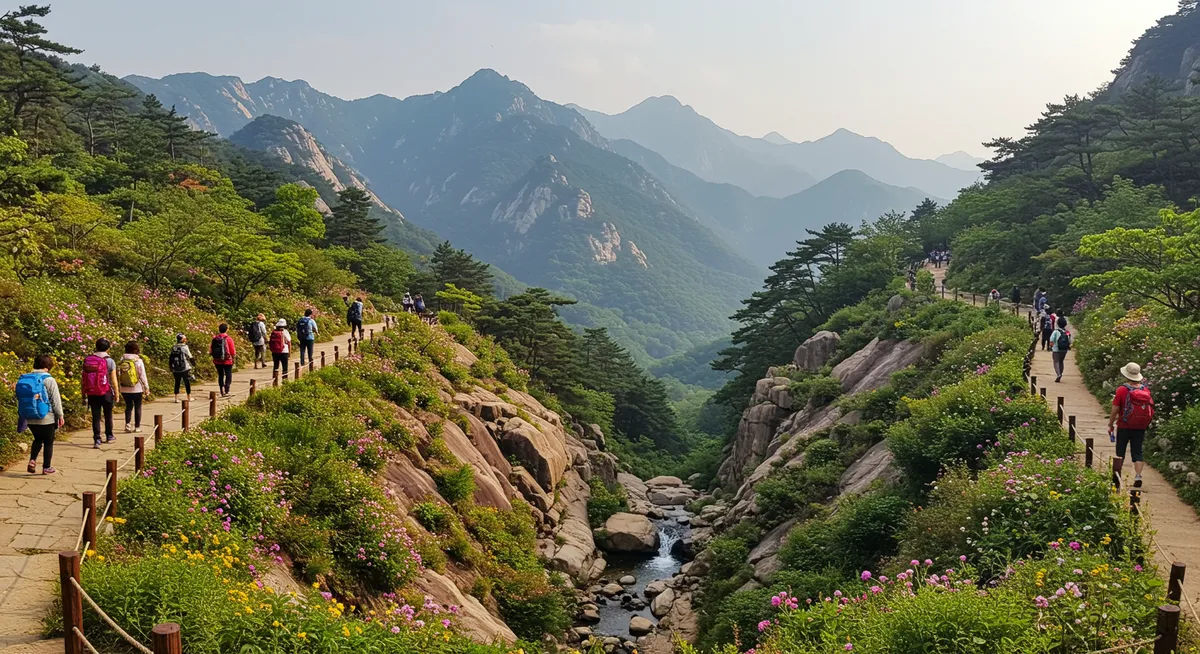
Gyeongju's Best Hiking Trails
Table of Contents
Want to find the best nature experiences for this destination? Chat with our nature tourism specialist!
Get Nature TipsCategory: best-hiking-trails-gyeongju
Explore Gyeongju's Premier Hiking Paths
As someone who's spent countless hours exploring South Korea's diverse landscapes, I can attest that Gyeongju offers a unique blend of history and natural beauty, making it a prime destination for hikers. Beyond its famous historical sites, the city boasts an array of stunning trails suitable for all levels. Whether you're seeking a leisurely stroll through ancient forests or a challenging ascent to panoramic viewpoints, the best hiking trails Gyeongju offers promise unforgettable experiences. These paths not only provide excellent physical activity but also lead you through serene settings, often revealing hidden cultural gems.
Namsan Mountain: A Living Outdoor Museum
Namsan Mountain truly stands out among the best hiking trails Gyeongju has to offer, serving as an expansive open-air museum. My personal explorations on Namsan have always unveiled new discoveries, from ancient Buddhist carvings to forgotten temple sites nestled amongst the pines. It features numerous distinct routes, each varying in difficulty and historical significance, allowing hikers to choose their preferred journey. From the relatively gentle ascent to Sambulsa Temple to more strenuous paths leading to Geumobong Peak, every trail promises a blend of spiritual tranquility and natural beauty. For a deep dive into its many routes and cultural significance, you can explore our comprehensive Namsan Mountain Gyeongju guide. It's an essential experience for anyone interested in both hiking and Korean heritage.
Tohamsan Mountain: Home of Bulguksa and Seokguram
For those who appreciate combining spiritual discovery with physical activity, Tohamsan Mountain offers some of the most revered hiking trails in Gyeongju. This isn't just a hike; it's a pilgrimage to UNESCO World Heritage sites like Bulguksa Temple and the Seokguram Grotto. The trail itself is well-maintained, providing a moderately challenging ascent through lush forests that burst into vibrant colors during autumn. I particularly cherish the crisp air and serene atmosphere found along these ancient paths, especially when approaching the grotto. While the views from the peak are modest due to dense foliage, the cultural rewards at the summit are immense. It's a fantastic way to immerse yourself in both natural splendor and profound history, making it a cornerstone of Gyeongju's nature attractions.
Daebon Beach Coastal Walk: Ocean Views & Easy Breezes
Shifting from mountain treks, the Daebon Beach Coastal Walk provides a refreshing alternative among Gyeongju's diverse hiking trails. Located near the underwater tomb of King Munmu, this easy, flat path offers stunning panoramic views of the East Sea. It's perfect for a leisurely stroll, a morning jog, or simply enjoying the ocean breeze away from the city bustle. Unlike the more strenuous mountain options, this trail is incredibly accessible, making it ideal for families or those seeking a gentler outdoor experience. The sound of waves accompanies you, providing a tranquil backdrop to your walk. As a seasoned traveler, I find these less demanding trails just as valuable for their unique beauty and accessibility, making Gyeongju a truly versatile hiking destination.
Gyeongju National Park's Hidden Gems
Beyond the prominent peaks, Gyeongju National Park encompasses several lesser-known yet equally rewarding hiking trails that offer a deeper dive into the region's natural beauty. Areas like Bomun Lake or the trails around Poseokjeong provide quieter, scenic options. While not as rugged as the mountain climbs, these routes are perfect for experiencing Gyeongju's famed spring blossoms or spectacular autumn foliage. In fact, if you're planning a visit for the stunning cherry blossom forecast 2025 or seeking the best autumn foliage spots 2025, these park trails are indispensable. I've often discovered the most serene moments on these unassuming paths, reinforcing that Gyeongju offers exceptional hiking experiences for every season and preference.
Frequently Asked Questions
What is the best time of year to go hiking in Gyeongju?
Are Gyeongju's hiking trails suitable for beginners?
What should I bring for a day hike in Gyeongju?
Gyeongju truly offers an exceptional array of hiking trails, blending ancient history with breathtaking natural beauty. From the culturally rich paths of Namsan and Tohamsan to the serene coastal walks and tranquil park routes, there’s a perfect adventure for every hiker. These trails not only provide excellent opportunities for physical activity but also connect you deeply with Korea's spiritual and natural heritage. Embrace the diverse landscapes and discover why Gyeongju is an unparalleled destination for outdoor enthusiasts. Plan your next journey and explore the remarkable hiking paths this historic city has to offer.